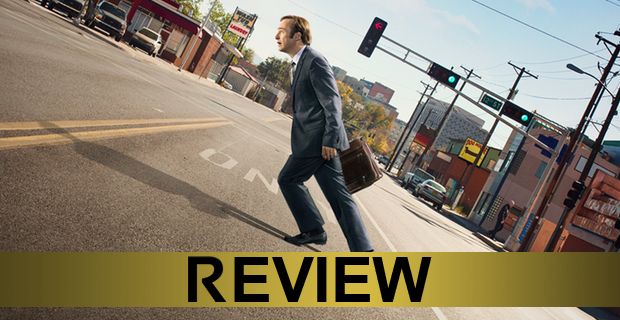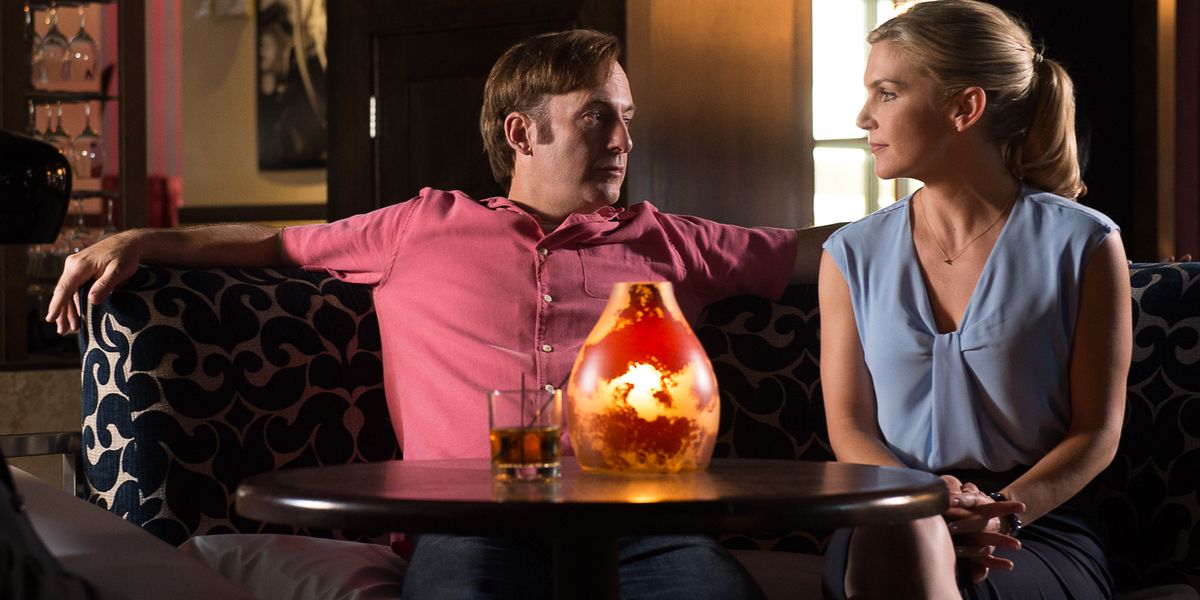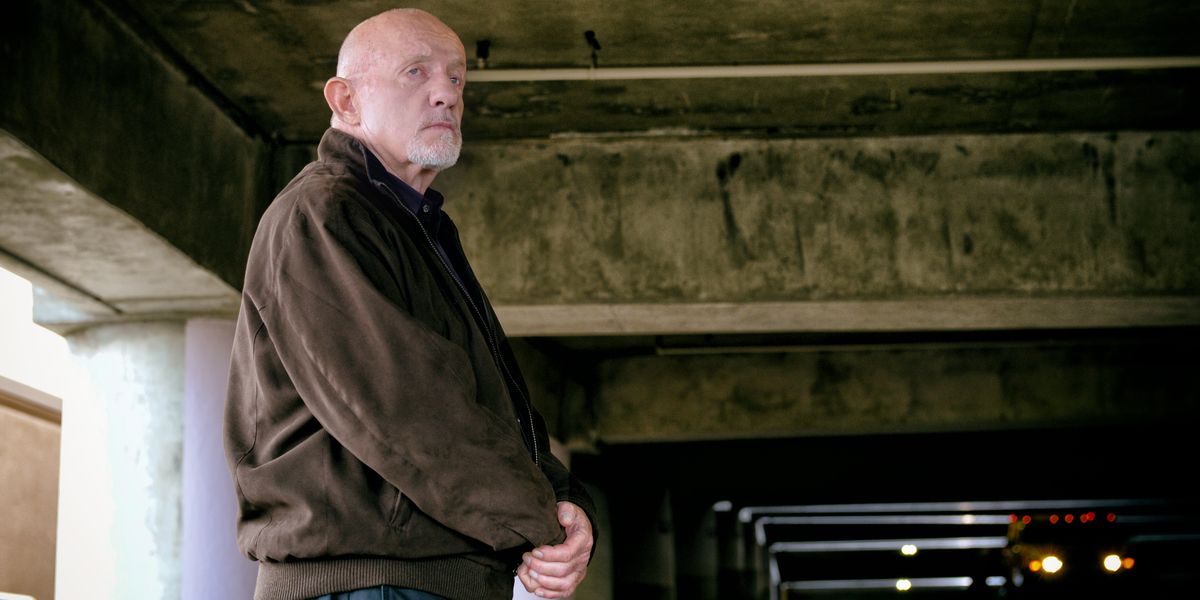[This is a review of Better Call Saul season 2, episode 1. There will be SPOILERS.]
-
Perhaps the most noteworthy takeaway from season 1 of Better Call Saul was not its connection to Breaking Bad, or the feeling that, even though Walter White was nowhere to be found, his presence hung over the launch of the series like a porkpie hat-wearing cloud of smoke. But rather, as the series pushed deeper into the unfulfilling life of Jimmy McGill and his fruitless pursuit of acceptance and recognition and success, the more it became clear Jimmy was meant to break bad in a fashion distinctly suited to his particular set of skills. The once-overwhelming shadow of television's past (and this show's future) vanished under the spotlight shined by the show's creators on a memorable supporting character's transition into leading man.
That Bob Odenkirk's Jimmy McGill/Saul Goodman was ready to step into the role of protagonist reads like a particularly fanciful "What if?" – a throwback to when the idea was just a twinkle in eye of Peter Gould and Vince Gilligan. And for the show to be allowed to find its own distinct voice and dictate its own slower way of doing things – and still share DNA with one of the greatest television shows ever created – is such an important part of Better Call Saul's identity (inasmuch as the series is still the younger sibling to Breaking Bad – narrative chronology be damned!) that for many of the same notions to then be directly reflected in the actual story of the Brothers McGill is just icing on the cake.
The show's grasp of its unique place as both a look back and insight into the future is what grants Better Call Saul its greatest storytelling asset: a remarkably laid back approach to how the story of Jimmy McGill unfolds. Amongst the Easter eggs and callbacks for fans, the series doesn't feel as though it is in any particular hurry to introduce Saul Goodman or for him to lease office space in an Albuquerque strip mall. And as season 2 kicks off with another beautifully languorous episode with 'Switch,' it is clear the proverbial fire has mercifully yet to be lit under the series' narrative.
There are very few series that can move at the sort of pace Saul moves at without being branded indolent. And yet the absence of urgency, the sense that the show is like Jimmy – just floating away in a lazy river under an assumed name, shoveling crab dip into his face – is far more a feature than a bug. The first hour of season 2 is such that the moment it ends it does what all good television shows should: it leaves you immediately wanting more. Watching Jimmy brazenly peel the taped-on instructions to leave a light switch in the "on" position during his first day at a new law firm is the antithesis of the typical television cliffhanger, and yet, in the context of Better Call Saul, Jimmy may as well have just shot J.R.
A slower pace also gives the show a chance to play around with the unique rhythms of its characters and discover how they relate to one another. The idea that the series would open up its second season by moving Jimmy and Kim's (Rhea Seehorn) relationship forward via a lengthy grift of onetime Breaking Bad bit player Kyle Bornheimer – i.e., Clark, the Bluetooth-wearing investment banker who winds up on Walt's bad side in 'Ken Wins' – is indicative of the emphasis on story over plot. Watching Jimmy and Kim work Clark into an afternoon of buying round after round of fifty-dollar-per-shot tequila, while Clark thinks he's landing a plum, inexperienced pair of clients with money they don't know what to do with is entertaining in its own right. And while it reads like a throwback to last season's reunion with Slippin' Jimmy's old hustling partner Marco (Mel Rodriguez), it also works as one very charming bit of flirtation and foreplay, allowing the aforementioned progression of Jimmy and Kim as a possible "item" to not only happen, but happen in a way that feels right for both characters.
The hour is comprised of a series of subtle, intimate, and meaningful shifts; it's the show leaving its mark on the story like Cinnabon Saul does the mall's trash collection room during the present-day opening sequence. The various moves are in keeping with the already-established tone and rhythms of the show, so when Saul uses Kim's finger as a toothbrush there's a familiar sense of playfulness that is quietly shattered as her nonverbal cues later on suggest a disinclination to leave him in her home while she goes to work, as well as a suggestion that maybe Jimmy should, in fact, not be the guy lazing about a resort's pool all day, taking calls through a Ziploc bag. Either way, it seems Kim is at least partially the impetus for Jimmy's decision to take the job he turned down in the early part of the episode.
As always with this show, there's the sense that even while things are moving slowly or not moving at all, the wheels are in fact turning – like the rims on wannabe drug dealer Price's (Mark Proksch) ostentatious Hummer. The callback to this character works remarkably well in terms of getting the story up to speed with Mike and, certainly, Nacho Varga (Michael Mando), as Price's inflated sense of self-worth, brought on no doubt by the inner outlaw he recently discovered, leads him to make a series of rookie mistakes, underlining the egocentric perils of a life of crime. But that seeming aside, the exchange between Price and the police officers who wear their suspicions about his ransacked house and his missing baseball card collection like it's another badge demonstrates just how sharp Better Call Saul is, and how well it – like its predecessor – sets up what's to come through seemingly innocuous moments and flashes of droll comedy.
All in all, 'Switch' is a welcome return for Better Call Saul, and a sign that what's to come in season 2 will match, if not exceed the show's stellar first season.
-
Better Call Saul continues next Monday with 'Cobbler' @10pm on AMC.
Photos: Ursula Coyote/Sony Pictures Television



